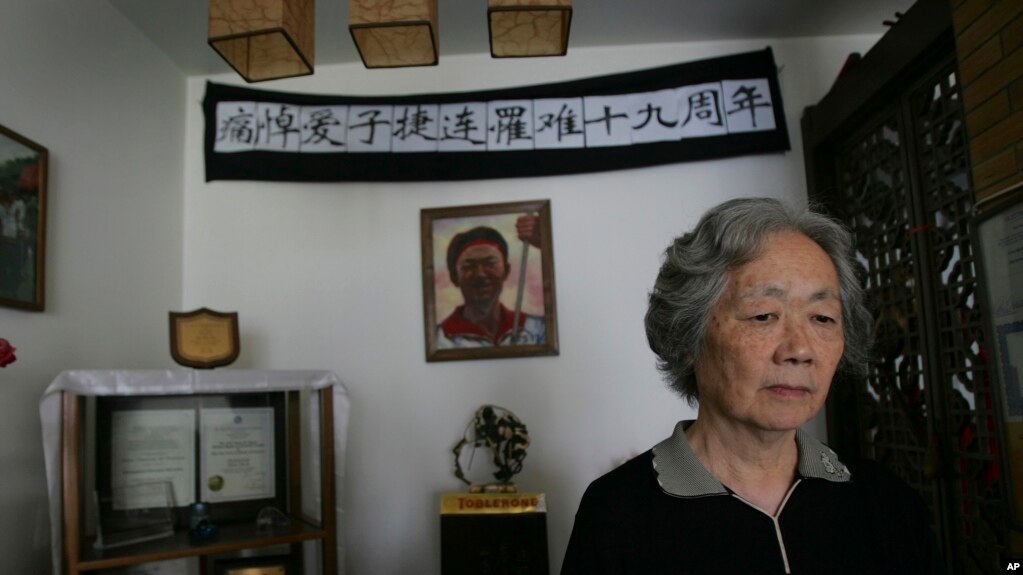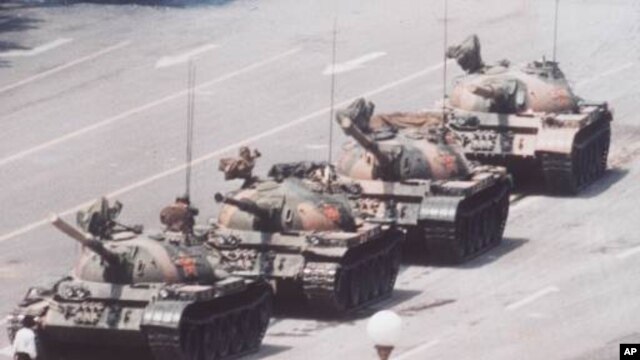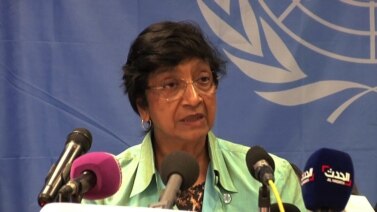
Welcome to As It Is, the daily magazine show from VOA Learning English.
I’m Mario Ritter.
Today, we hear a report on Tibetan weavers living in Tibet who are trying to preserve their culture. But first, we remember a protest and the campaign against it that made headlines around the world 24 years ago.
June fourth marks the 24th anniversary of the Chinese government’s suppression of protests at Tiananmen Square in Beijing. As a public place, the Tiananmen Square is huge. On one side is The Great Hall of the People, where China’s Congress meets. In the center of the square is the final resting place of Communist China’s first leader, Mao Zedong. Looking north from the square are the high walls of The Forbidden City, home to China’s rulers for centuries.

On June fourth, 1989, tanks and soldiers entered Tiananmen to crush protests led by students and activists. The protesters started gathering there weeks earlier to mourn former Communist Party leader Hu Yaobang, who had died in April. The demonstrations led to calls for reform and democracy in China.
Last Friday, American State Department officials released a statement marking the anniversary of the attack. It called on China to “end harassment of those who participated in the protests and fully account for those killed, detained, or missing.” The State Department called on China to “protect the universal human rights of all its citizens.”
On Monday, a Chinese spokesman said his country urges the United States to, in his words, end political prejudice and “correctly treat China's development." He went on to call the State Department comments, "a rude interference in China's internal affairs."
It is estimated that several hundred to several thousand protestors were killed when Chinese troops raided Tiananmen Square. It is not known exactly how many were injured or arrested.
China still considers the protests a "counter-revolutionary rebellion." The government bans discussion of the incident in public and on the Internet. The government has denied any wrongdoing and never provided a detailed explanation of what happened.
Last week, the New York-based group, Human Rights in China, released on open letter from the activist group Tiananmen Mothers. It called for an open discussion and reconsideration of the events of June 4th.
In 1959, Tibetans rebelled against Chinese occupation of their homeland. After the rebellion failed, many Tibetans fled across the Himalayan Mountains to Nepal. Today, 20,000 Tibetan refugees live in the country.
The refugees say they are facing increasing restrictions because of pressure from China. Caty Weaver has the from VOA reporter Aru Pande in Kathmandu.
Dolma Lama learned to make Tibetan carpets from her mother, who settled in Kathmandu after the unsuccessful rebellion. Dolma Lama was born in Nepal. She has been weaving cloth since she was 19. She says she honors Tibetan tradition in several ways.
“It’s very important because we are in exile and not in our country. Carpet weaving is part of our culture. We wear Tibetan dress all the time, which is also part of preserving our culture.”

The weavers at the Jawalakhel Handicraft Center sit for hours each day, helping to create carpets that are sold at a showroom. The center supports Nepal’s largest Tibetan community, made up of 1,000 people who live in the center of Kathmandu. The profits go to schools for refugee children and homes for older adults.
Karma Dawa is the general manager of the center. Like Dolma Lama, he believes in the importance of tradition.
“I think it’s very important for the community and the Tibetan people here as well as those in exile to keep our traditions alive so that it can be passed on to our younger generations.”
But protecting those traditions is getting harder for Nepal’s Tibetans. Activists say that in the past few years, officials have banned Tibetans from gathering in groups. They say that includes gathering for anything from an outdoor meal to a celebration of the birthday of Tibet’s spiritual leader, the Dalai Lama.
On the day that VOA reporter Aru Pande worked on this story, a Nepalese police officer kept close watch.
The head of the Human Rights Organization of Nepal, Sudip Pathak, says life is already difficult for Tibetans in the country. For example, Nepal stopped giving identification cards to refugees in the 1990s. The effect of this was to leave many Tibetans unable to get a higher education or jobs.
Sudip Pathak says the restrictions depend on who is in power in Nepal. He says if the government is liberal or democratic, refugees can take part in their activities, including gathering peacefully to pray. But if the government is communist or sympathetic to communism, the human rights leader says the Tibetans cannot do anything.
Activists for the refugees say China is using aid and investment in Nepal to make sure the country prevents anti-Chinese activity.
But the chairman of the China Study Center in Kathmandu says there is nothing wrong with Nepal showing support for its “one-China” policy. Madan Regmi says the Nepalese have, in his words, “every right” to ban what he calls anti-Chinese activity.
For now, the Tibetan weavers hold onto their culture and traditions. They take heart in knowing their work and their story will reach homes across the world.
I’m Caty Weaver.
Thank you for listening today. You can read and download our programs at learningenglish.voanews.com. And join us at the beginning of the hour Universal Time for the latest news.





